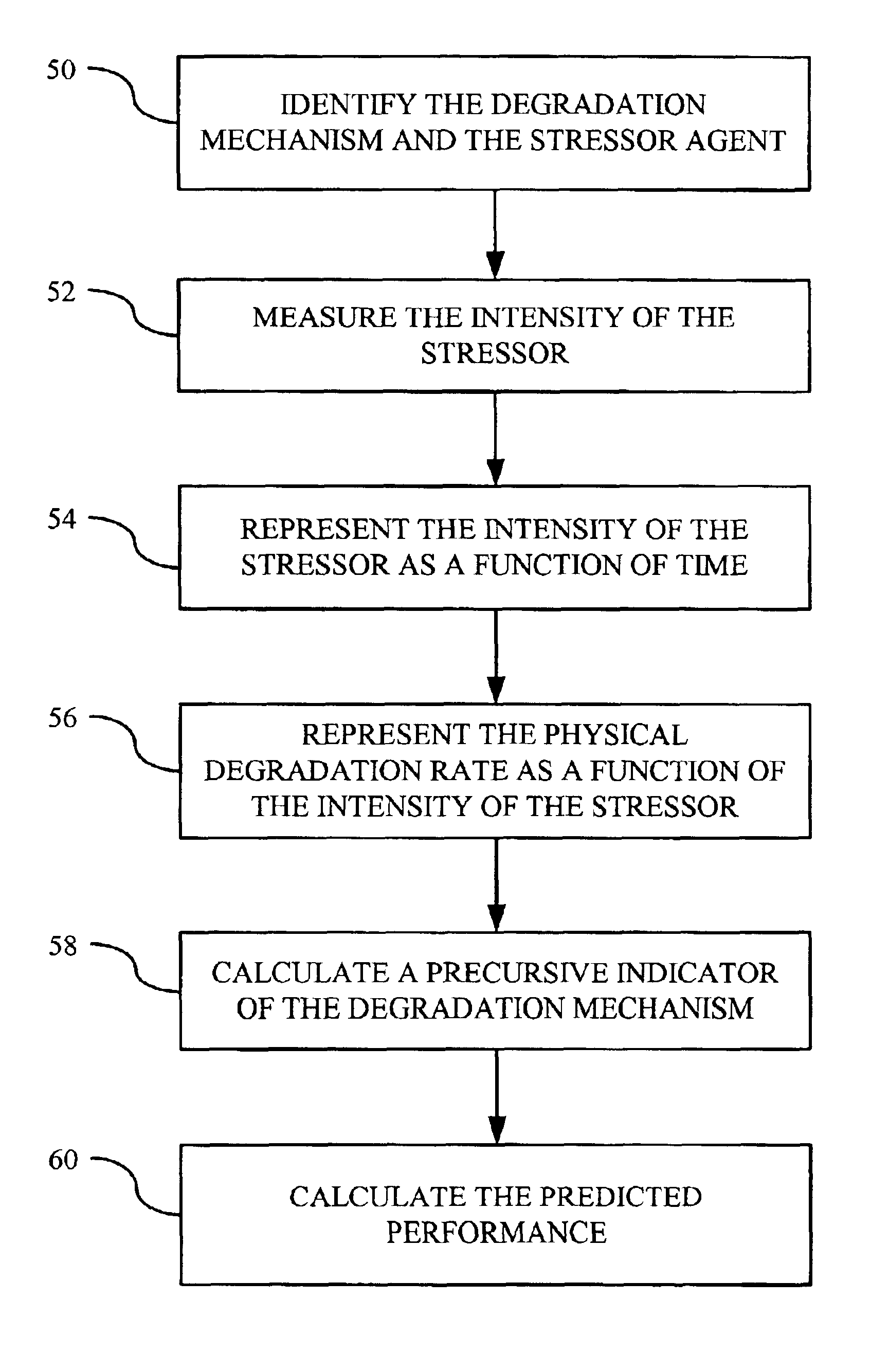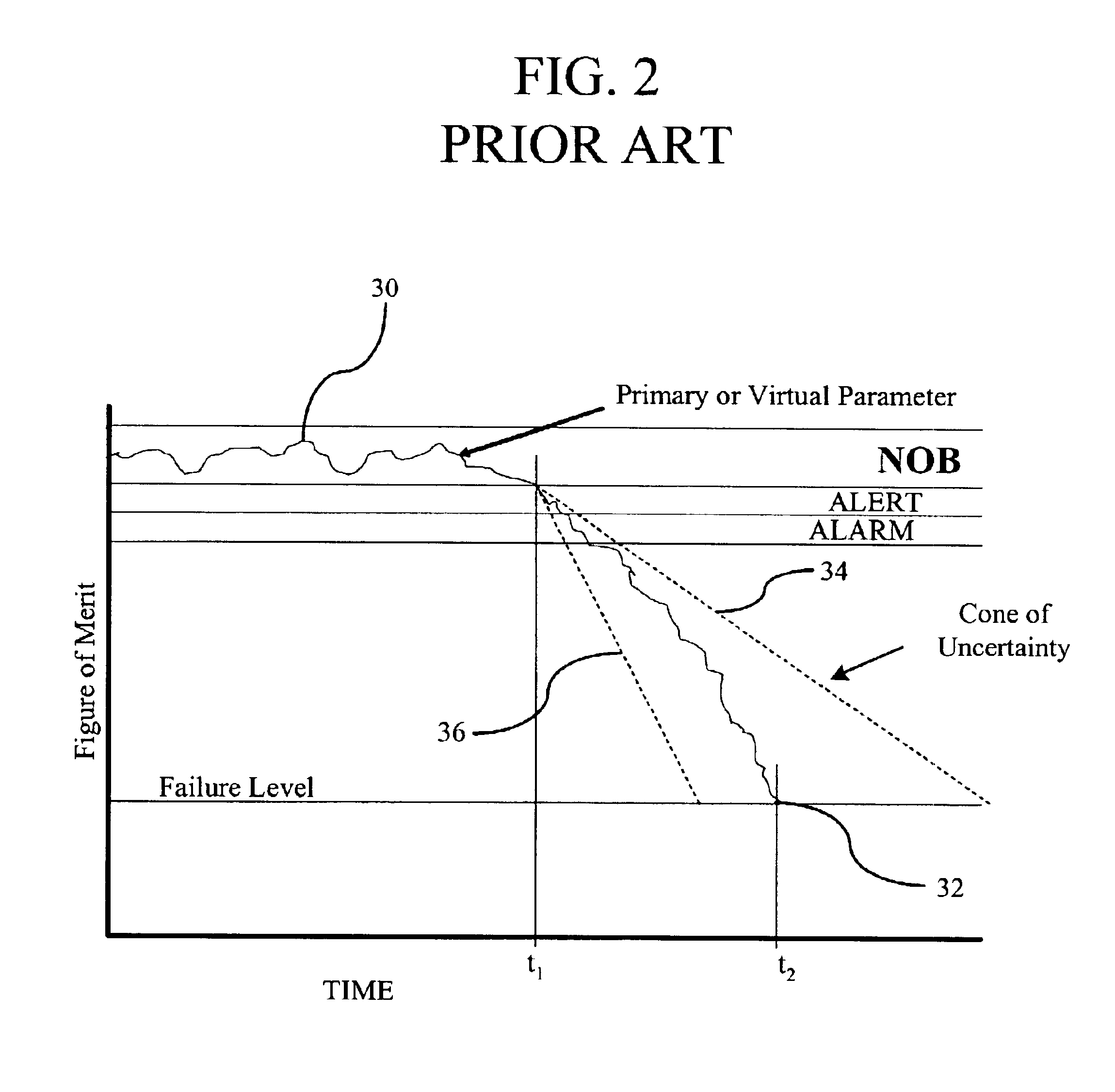Methods and systems for analyzing the degradation and failure of mechanical systems
- Summary
- Abstract
- Description
- Claims
- Application Information
AI Technical Summary
Benefits of technology
Problems solved by technology
Method used
Image
Examples
first embodiment
One of the most predominant degradation mechanisms resulting in centrifugal pump failure is vibration. Other mechanisms and causes, however, may also lead to the failure of the pump (e.g., erosion, corrosion, etc.). One of the principal stressor agents that contribute to vibration in the centrifugal pump is the misalignment of the axial or angular plane of rotation of the driving shaft with the driven shafts or an imbalanced or axial-eccentricity condition in one of the rotating elements.
FIG. 6 shows a centrifugal pump 100 utilizing a dynamic laser alignment system that may be used to measure alignment and vibration. As seen in FIG. 6, a motor 102 includes a driving shaft 104 that couples with an impeller shaft 106 of the pump 100. The impeller shaft 106 of the pump 100 is coupled to an impeller, or rotor, (not shown) whose rotating blades force liquid entering the pump at input 108 through a volute, or scroll, (not shown) to output 110. The coupling may be any type of suitable coup...
second embodiment
The second representative embodiment involves quantifying the vibration of the pump-motor system by measuring the reaction forces exerted by the drive shaft 104 on the bearings of the motor 102 using a system of load cells. FIG. 9 shows one possible embodiment of the load cell system, but is not intended to be limiting in any way. Instead, a number of different load cell configurations are possible, including the use of only one set of load cells on either the inboard or outboard side of the motor 102, or the use of a set of load cells elsewhere on the rotating shafts of the pump-motor system.
FIG. 9 shows the motor 102 and its armature 150. Two motor shafts extend from the motor armature 150—an inboard motor shaft 152 and an outboard motor shaft 154. The inboard motor shaft 152 is housed and rotates within an inboard radial bearing 156. Similarly, the outboard motor shaft 154 is housed and rotates within an outboard radial bearing 158. As more fully discussed below, each of the radi...
third embodiment
Another one of the predominant degradation mechanisms resulting in centrifugal pump failure is cavitation. Cavitation in a centrifugal pump is recognized as a fluid state in close proximity to, or above, the working fluid saturation line (i.e., how close the fluid is in terms of temperature / pressure space to the boiling point of the liquid). The principal stressor agent that contributes to cavitation in the centrifugal pump is flow throttling and suction temperature rise.
FIG. 13 shows the centrifugal pump 100 and a set of acoustic emission sensors 200. In particular, FIG. 13 shows the volute 202 of the pump 100 as it extends from the rotor 204 toward the output 110. Acoustic emission sensors 200 are placed along the exterior of the volute 202 and on the exterior adjacent the eye of the impeller 206. The acoustic emission sensors 200 may comprise any suitable acoustic sensor. In one specific embodiment, for instance, the acoustic emission sensors 200 comprise PINDUCER VP-1093 acousti...
PUM
 Login to View More
Login to View More Abstract
Description
Claims
Application Information
 Login to View More
Login to View More - R&D
- Intellectual Property
- Life Sciences
- Materials
- Tech Scout
- Unparalleled Data Quality
- Higher Quality Content
- 60% Fewer Hallucinations
Browse by: Latest US Patents, China's latest patents, Technical Efficacy Thesaurus, Application Domain, Technology Topic, Popular Technical Reports.
© 2025 PatSnap. All rights reserved.Legal|Privacy policy|Modern Slavery Act Transparency Statement|Sitemap|About US| Contact US: help@patsnap.com



